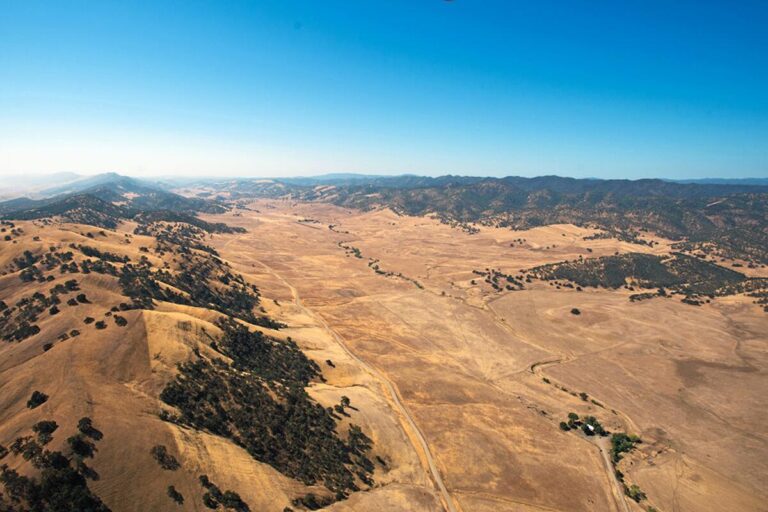Plans call for building Sites Reservoir in this valley north of Sacramento. (Risa Johnson / Calif. Dept. of Water Resources)
This story was originally published in Boiling Point, a weekly newsletter about climate change and the environment. Sign up here to get it in your inbox.
When you think about sources of planet-heating greenhouse gases, dams and reservoirs probably aren’t some of the first things that come to mind.
But scientific research has shown that reservoirs emit significant amounts of methane, a potent greenhouse gas. It’s produced by decomposing plants and other organic matter collecting near the bottom of reservoirs. Methane bubbles up to the surface of reservoirs, and also passes through dams and bubbles up downstream.
Scientists call these processes ebullition and degassing.
And there is a growing debate about how much of these gases would be emitted by California’s planned Sites Reservoir, which is slated to be built in a valley north of Sacramento to store water for agriculture and cities.
When I recently learned of a new analysis estimating the greenhouse gas emissions of the Sites Reservoir project, I was intrigued. The results of the analysis appear in a report prepared by the environmental groups Friends of the River and Tell The Dam Truth, an effort funded by the clothing company Patagonia.
The groups used a newly developed modeling tool to estimate greenhouse gas emissions, including methane and other gases, over a 100-year period. The findings were striking: They estimated that if the reservoir is built and filled, it would annually emit approximately 362,000 metric tons of emissions, measured as carbon dioxide equivalent.
They said that’s about the same as putting an additional 80,653 gasoline-fueled cars on the roads.
The authors of the analysis, including environmental activist Gary Wockner, ecologist Mark Easter and hydrologist Gordon McCurry, wrote in the report that […]
Full article: www.latimes.com

